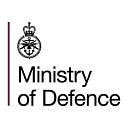The science of blast injury aftercare
By Dr Emily Mayhew, Imperial Lead, Paediatric Blast Injury Partnership and Historian in Residence, Imperial College London
Blast injury is the most complicated form of wounding a human being can endure. It doesn’t matter what kind of explosive — landmine, unexploded ordnance, RPG, IED — the effects are the same. Shrapnel and fragmentation doing the visible damage, followed by an invisible blast wave that makes everything so much worse. Blast injury is complicated from the point of wounding (the explosion) to years after — may be a whole lifetime, we don’t know yet — because the normal human healing processes are disrupted and sometimes never get back to normal.
And blast is the most common injury to be inflicted in war. Blast weapons work well, are cheap to build and operate, and don’t need specialist storage facilities, so blast injury is likely to go on being the most significant challenge for those planning and treating our military casualties. We’re paying attention now — we’ve been paying proper attention since 2010 when the Royal British Legion Centre for Blast Injury Studies was founded at Imperial College in London, part-funded by the MoD. The Centre (known as CBIS) brings together everyone who is needed to treat blast injury. At CBIS there are clinicians, rehab specialists, bio-engineers, orthopaedic surgeons, all of whom are looking at the tissues of the body, how they respond to blast and how we can reconstruct, repair and maintain them. Working with the military is essential, as is the Centre’s relationship with veterans themselves. Through them CBIS is learning that pain is a long term outcome of blast injury, and perhaps even PTSD, so investigating both of those has been added to the list of research goals. What everyone working there knows is that blast injury is about survival and life beyond survival, and it’s up to them to find the way forward.
Dr Emily Mayhew is the author of “A Heavy Reckoning: War, Medicine and Survival in Afghanistan and Beyond”
